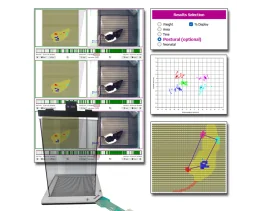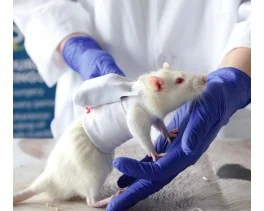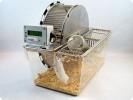Authors
F Mottarlini, G Bottan, B Tarenzi, et al
Lab
Department of Pharmacological and Biomolecular Sciences, Universitˆ degli Studi di Milano, Milano, Italy.
Journal
Nutrients
Abstract
Intense physical activity and dieting are core symptoms of anorexia nervosa (AN). Their combination evolves into compulsivity, leading the patient into an out-of-control spiral. AN patients exhibit an altered activation of nucleus accumbens (NAc), revealing a dysfunctional mesocorticolimbic reward circuitry in AN. Since evidence exists that a dysregulation of the glutamate system in the NAc influences reward and taking advantage of the activity-based anorexia (ABA) rat model, which closely mimics the hallmarks of AN, we investigated the involvement of the glutamatergic signaling in the NAc in this experimental model. We here demonstrate that food restriction causes hyperactive and compulsive behavior in rodents, inducing an escalation of physical activity, which results in dramatic weight loss. Analysis of the glutamate system revealed that, in the acute phase of the pathology, ABA rats increased the membrane expression of GluA1 AMPA (alpha-amino-3-hydroxy-5-methyl-4-isoxazolepropionic acid) receptor subunits together with its scaffolding protein SAP97. Recovery of body weight reduced GluN2A/2B balance together with the expression of their specific scaffolding proteins, thus suggesting persistent maladaptive neurotransmission. Taken together, AMPA and NMDA (N-methyl-D-aspartate) receptor subunit reorganization may play a role in the motivational mechanisms underlying AN.
BIOSEB Instruments Used
Spontaneous activity wheels (BIO-ACTIVW-M)

 Douleur - Allodynie/Hyperalgésie Thermique
Douleur - Allodynie/Hyperalgésie Thermique Douleur - Spontanée - Déficit de Posture
Douleur - Spontanée - Déficit de Posture Douleur - Allodynie/Hyperalgésie Mécanique
Douleur - Allodynie/Hyperalgésie Mécanique Apprentissage/Mémoire - Attention - Addiction
Apprentissage/Mémoire - Attention - Addiction Physiologie & Recherche Respiratoire
Physiologie & Recherche Respiratoire




































 Douleur
Douleur Système Nerveux Central (SNC)
Système Nerveux Central (SNC)  Neurodégénérescence
Neurodégénérescence Système sensoriel
Système sensoriel Système moteur
Système moteur Troubles de l'humeur
Troubles de l'humeur Autres pathologies
Autres pathologies Système musculaire
Système musculaire Articulations
Articulations Métabolisme
Métabolisme Thématiques transversales
Thématiques transversales Congrès & Meetings
Congrès & Meetings 
